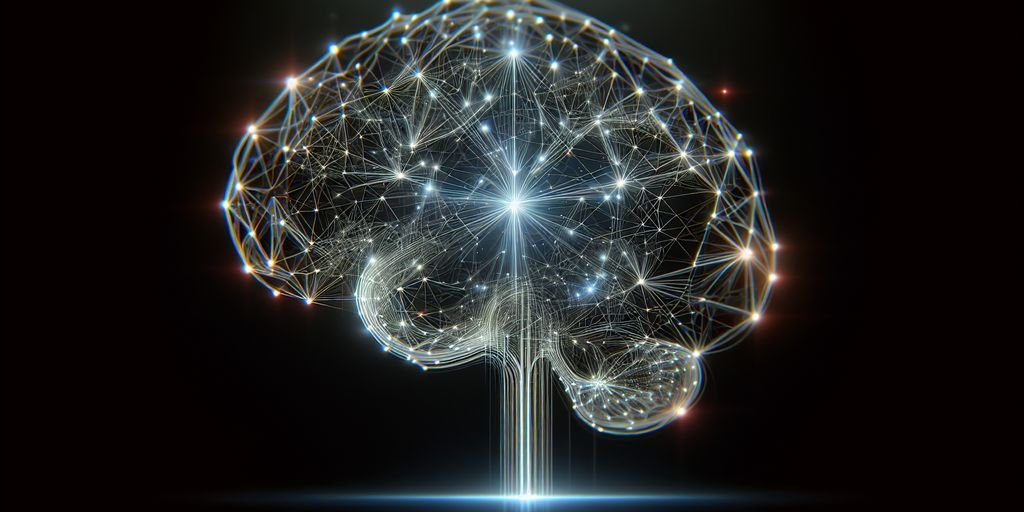Generative diffusion models represent a cutting-edge frontier in artificial intelligence, enabling enhanced capabilities in content creation and beyond. These models, which include advanced techniques for generating high-quality data samples, are reshaping industries by providing tools for more dynamic and innovative outputs. As we delve into the mechanics and applications of these models, it becomes clear that they are not just tools for automation, but catalysts for creativity and efficiency.
Key Takeaways
- Generative diffusion models are pivotal in creating high-quality, diverse data samples, revolutionizing content creation and other applications.
- These models leverage robust mathematical frameworks and advanced pre-training techniques to enhance AI’s generative capabilities.
- The integration of diffusion models into various industries is not only enhancing creative outputs but also transforming traditional business processes.
Understanding Generative Diffusion Models
The Basics of Diffusion Models
Diffusion models represent an innovative class of generative models that enhance the process of creating new data. These models operate by iteratively applying controlled random changes to an initial data sample, gradually forming new samples that are coherent and high-quality. The iterative nature of diffusion models allows for a more nuanced control over the generation process, significantly reducing training time and improving the overall quality of the generated models. This makes diffusion models a pivotal development in AI content creation.
How Diffusion Models Enhance AI Capabilities
Diffusion models have swiftly taken the lead in generative modeling, establishing unprecedented standards for producing high-quality, varied outputs. Unlike Generative Adversarial Networks (GANs)—once considered the gold standard in this realm—diffusion models bring several unique benefits to the table. They are renowned for generating outputs that more accurately reflect the complexity of real-world data, showcase a wider array of diversity, and are based on a training approach that is more stable and reliable.
Applications in Content Creation
Stable Diffusion models are a type of Generative Artificial Intelligence model that utilize a two-step process called forward diffusion and reverse diffusion to determine vectors in latent space. These models, also known as denoising diffusion probabilistic models (DDPMs), are effective in generating high-quality and realistic outputs. While there are various techniques used in Generative AI, such as VAEs, LSTM, transformers, and neural radiance fields, diffusion models offer unique capabilities that make them particularly suited for enhancing content creation across various media.
Integrating Diffusion Models into Business
Boosting Creative Output
By leveraging the capabilities of diffusion models, marketing researchers can develop data-driven insights into consumer preferences, product adoption patterns, and market dynamics. This enables businesses to make informed decisions that increase return on investment and drive growth. For instance, diffusion models can help predict how a new product will fare in the market and assist in tailoring targeted promotional campaigns for optimal reach and impact.
Streamlining Content Production
Effective deployment of diffusion models often requires consideration of the unique structures inherent in critical data domains. To address such complexities, modifications to the diffusion models are necessary. This poses challenges for discrete data applications. A novel solution, VQ-Diffusion, addresses this by introducing a random walk in the discrete data space, enhancing the model’s applicability and efficiency in content production.
Revolutionizing Product Design
Beyond these common uses, diffusion models are also employed in domains like finance for modeling stock price movements and physics for simulating particle motion. As the field of diffusion models continues to advance, researchers are discovering novel applications that leverage the power of these generative models to address diverse and challenging real-world problems. This ongoing innovation is revolutionizing product design, offering new ways to conceptualize and create products that meet evolving consumer demands.
Advancements and Opportunities in Generative AI
Recent Breakthroughs in Diffusion Models
In the past few months, the field of generative AI has witnessed significant breakthroughs, particularly in diffusion models. These advancements have primarily focused on improving the efficiency and accuracy of these models, making them more practical for real-world applications. A notable trend is the integration of hybrid approaches combining classical machine learning techniques with advanced diffusion methods to enhance learning capabilities and performance.
Expanding Applications Across Industries
Generative AI is rapidly expanding its footprint across various industries, from creative arts to complex engineering. The versatility of diffusion models allows them to be adapted for diverse tasks such as generating realistic images, creating virtual environments, or even designing advanced materials. This expansion is not only revolutionizing how businesses operate but also how they innovate.
Future Prospects and Challenges
The future of generative AI holds immense potential, underscored by the continual learning and improvement of diffusion models. However, challenges such as ethical considerations, explainability, and the need for real-time interactivity remain. Addressing these challenges is crucial for the sustainable advancement of generative AI technologies, ensuring they contribute positively to society and various industry sectors.
Practical Guide to Using Generative Diffusion Models
Understanding the Mathematical Framework
Diffusion models operate by iteratively applying controlled random changes to an initial data sample, gradually forming new samples that are coherent and high-quality. The mathematical framework of diffusion models is based on a process that systematically introduces noise and then learns to reverse this noise to generate new data. This approach allows for nuanced control and high-quality outputs, making it a powerful tool in generative AI.
Building Your Own Diffusion Model
To build your own diffusion model, start by understanding the basic principles of how these models work. Classifier Guided Diffusion (CGD) involves enhancing the generation process with guidance from a classifier. This setup uses a pre-trained classifier to guide the diffusion process, ensuring that the generated outputs are not only high-quality but also aligned with specific goals or criteria.
- Gather necessary computational resources and datasets.
- Implement the basic diffusion model architecture.
- Integrate a classifier for guided diffusion.
- Train your model with appropriate data.
- Test and refine the model based on output quality and relevance.
Case Studies and Success Stories
The use of diffusion models in various industries showcases their versatility and effectiveness. From creating detailed and diverse images from textual descriptions to enhancing research in fields like pharmaceuticals and material science, diffusion models have proven their worth. Notable successes include the deployment of Stable Diffusion models, which have transformed content creation and opened new research avenues. These case studies not only highlight the capabilities of diffusion models but also serve as inspiration for aspiring developers and researchers in the field.
Conclusion
In conclusion, generative diffusion models represent a significant advancement in the field of artificial intelligence, offering powerful tools for enhanced content creation across various industries. By harnessing the capabilities of these models, businesses and creators can generate high-quality, diverse data samples, including realistic images and innovative content, tailored to specific needs. As the technology continues to evolve, the potential applications and improvements in these models promise to further revolutionize the landscape of digital creativity and productivity. Embracing these advancements not only boosts efficiency but also opens up new avenues for artistic and commercial expression, making it an exciting time for stakeholders in the AI-driven creative sector.
Frequently Asked Questions
What are generative diffusion models?
Generative diffusion models are a type of AI technology that algorithmically generates new data samples, such as images or text, by gradually learning from a distribution of data. They are known for producing high-quality outputs and are used in various applications like content creation and data augmentation.
How do diffusion models enhance AI capabilities?
Diffusion models enhance AI capabilities by providing a robust framework for generating diverse and high-quality data samples. This ability allows for more accurate simulations, improved data augmentation, and innovative content creation, pushing the boundaries of what AI can achieve in various industries.
What are some practical applications of diffusion models in content creation?
In content creation, diffusion models are used to generate realistic images, videos, and text. They are instrumental in fields such as advertising, entertainment, and the arts, where they help in creating engaging and visually appealing content that resonates with human perceptions.



